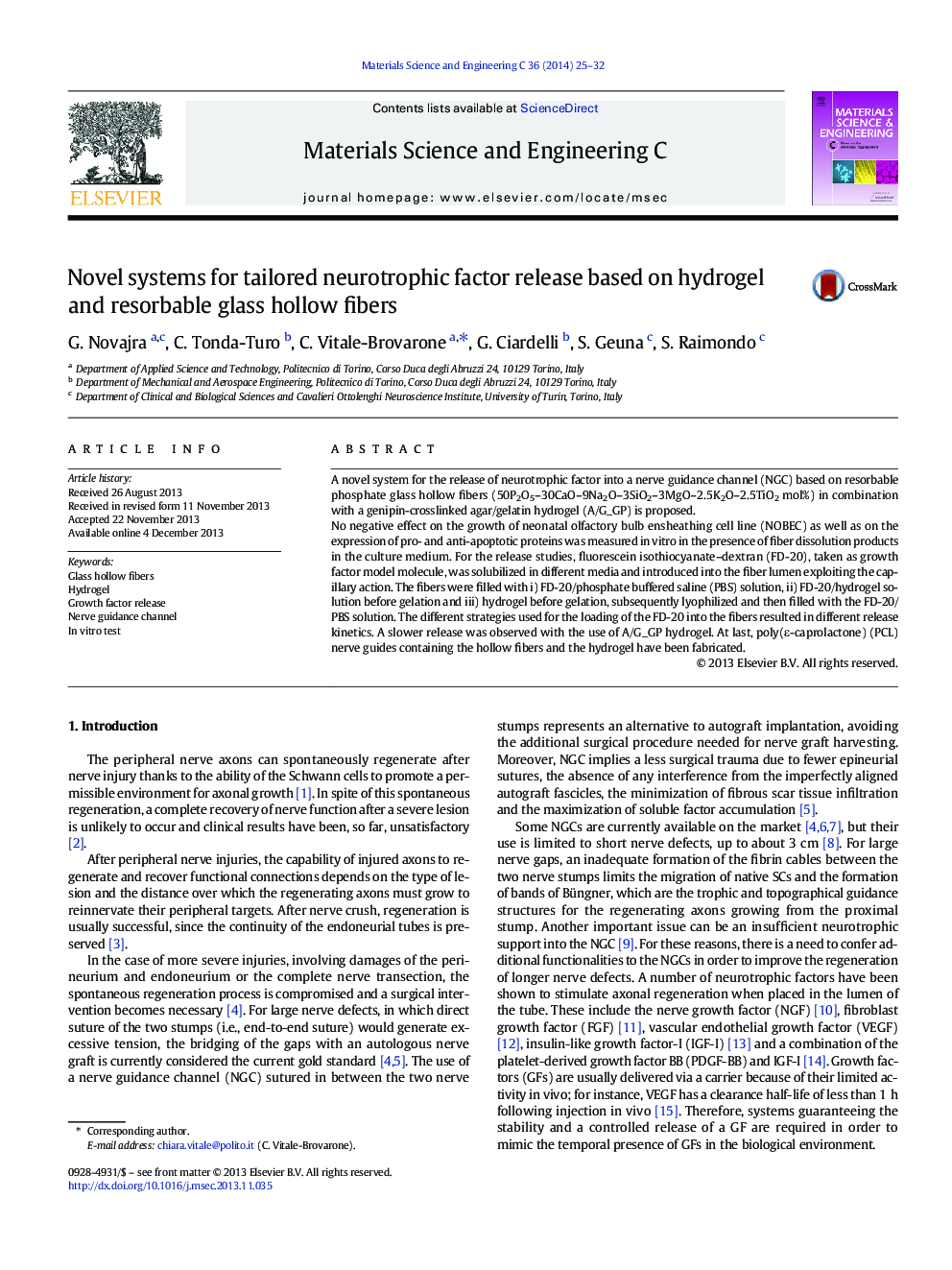| Article ID | Journal | Published Year | Pages | File Type |
|---|---|---|---|---|
| 1429217 | Materials Science and Engineering: C | 2014 | 8 Pages |
•A glass hollow fiber–hydrogel system is suitable for neurotrophic factor release.•Different release kinetics can be obtained acting on the fiber filling procedures.•A nerve guide containing the hollow fiber–hydrogel system has been fabricated.•This system can impart topographical and trophic functionalities to a nerve guide.
A novel system for the release of neurotrophic factor into a nerve guidance channel (NGC) based on resorbable phosphate glass hollow fibers (50P2O5–30CaO–9Na2O–3SiO2–3MgO–2.5K2O–2.5TiO2 mol%) in combination with a genipin-crosslinked agar/gelatin hydrogel (A/G_GP) is proposed.No negative effect on the growth of neonatal olfactory bulb ensheathing cell line (NOBEC) as well as on the expression of pro- and anti-apoptotic proteins was measured in vitro in the presence of fiber dissolution products in the culture medium. For the release studies, fluorescein isothiocyanate–dextran (FD-20), taken as growth factor model molecule, was solubilized in different media and introduced into the fiber lumen exploiting the capillary action. The fibers were filled with i) FD-20/phosphate buffered saline (PBS) solution, ii) FD-20/hydrogel solution before gelation and iii) hydrogel before gelation, subsequently lyophilized and then filled with the FD-20/PBS solution. The different strategies used for the loading of the FD-20 into the fibers resulted in different release kinetics. A slower release was observed with the use of A/G_GP hydrogel. At last, poly(ε-caprolactone) (PCL) nerve guides containing the hollow fibers and the hydrogel have been fabricated.
